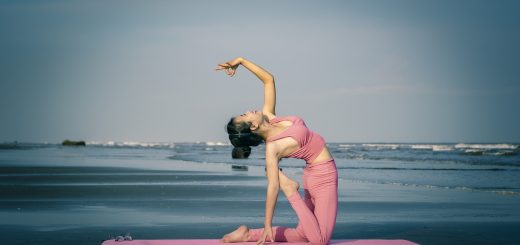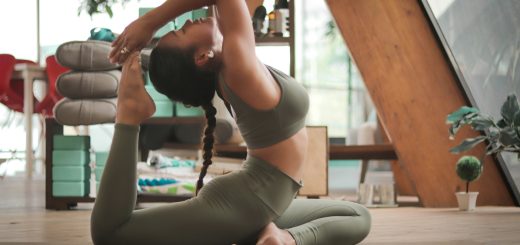Iyengar Yoga: Precision and Alignment in Practice

Before diving in, please note: This post is for informational purposes only. If you’d like to know more about how we approach topics, feel free to check out our friendly Disclaimer Page.
Hey there, amazing readers! 🖐️ Just a quick note: yes, we know there are a lot of ads here. Trust us, we get it—it’s not the prettiest look, but they help us keep this blog alive and kicking. Those pesky little ads cover the costs of all the behind-the-scenes magic, from hosting and tech stuff to creating content we hope you’ll love.
We’re committed to delivering quality posts, and your support (even just sticking around despite the ads) means everything to us. So, bear with us, and thanks for helping us keep the good vibes rolling. Now, on to the fun stuff! 😉
TRANSLATE BUTTON AT THE END OF THE ARTICLE
Introduction to Iyengar Yoga
Iyengar Yoga is a form of yoga that focuses on precision and alignment in the practice of asanas (postures).
Founded by B.K.S.
Iyengar, this style of yoga is known for its meticulous attention to detail and emphasis on correct body alignment.
The practice of Iyengar Yoga involves holding poses for longer durations, using props to support the body, and incorporating breath awareness into each movement.
It is a methodical approach to yoga that can be practiced by individuals of all ages and physical abilities.
The Importance of Precision in Iyengar Yoga
Precision is at the core of Iyengar Yoga, as it helps practitioners develop a deep awareness of their bodies and how they move.
By paying close attention to alignment and making subtle adjustments, students can experience the full benefits of each pose.
Precision in Iyengar Yoga also helps prevent injuries and ensures that the practice is safe and effective.
It is through precision that practitioners can achieve a state of physical, mental, and emotional balance.
Understanding Alignment in Practice
Alignment in Iyengar Yoga refers to the proper positioning of the body in each pose.
This involves aligning the bones, muscles, and joints to create a stable foundation and promote optimal energy flow.
Proper alignment not only enhances the physical benefits of each pose but also facilitates the flow of prana (life force energy) throughout the body.
By aligning the body correctly, practitioners can experience a sense of grounding, stability, and openness in their practice.
Benefits of Practicing Iyengar Yoga
There are numerous benefits to practicing Iyengar Yoga, including:
Improved flexibility and strength
Enhanced body awareness and mindfulness
Reduced stress and anxiety
Better posture and alignment
Relief from chronic pain and injuries
Increased focus and concentration
Enhanced overall well-being and vitality
Iyengar Yoga is a holistic practice that can have a profound impact on both the physical and mental aspects of a person’s health.
Props Used in Iyengar Yoga
Props are an integral part of Iyengar Yoga practice, as they help students achieve proper alignment and support the body in various poses.
Some common props used in Iyengar Yoga include:
Yoga blocks
Straps
Blankets
Bolsters
Chairs
Wall ropes
These props are used to modify poses, provide support, and assist students in achieving correct alignment.
They are essential tools that allow practitioners to deepen their practice and explore poses safely and effectively.
How to Achieve Precision in Asanas
Achieving precision in asanas requires a combination of focus, awareness, and practice.
Here are some tips to help you improve your precision in Iyengar Yoga:
Pay attention to alignment cues from your instructor.
Use props to support your body and maintain proper alignment.
Focus on engaging the core muscles to stabilize the body.
Practice mindfulness and stay present in each pose.
Make small adjustments to find the optimal alignment for your body.
Breathe deeply and consciously throughout your practice.
Take your time in each pose to explore alignment and sensation.
Be patient with yourself and allow for gradual progress and improvement.
By incorporating these tips into your practice, you can enhance your precision in asanas and deepen your understanding of each pose.
Incorporating Breath Awareness
Breath awareness is a fundamental aspect of Iyengar Yoga, as it helps practitioners connect with their breath and cultivate mindfulness.
In Iyengar Yoga, the breath is used as a tool to deepen the practice, release tension, and create a sense of calm.
By focusing on the breath while moving through poses, students can enhance their awareness, improve concentration, and regulate the flow of prana throughout the body.
Breath awareness is a powerful practice that can transform the way you experience yoga on and off the mat.
Common Misalignments to Avoid
In Iyengar Yoga, there are several common misalignments that students should be mindful of to prevent injury and enhance their practice.
Some common misalignments to avoid include:
Slouching or rounding the spine in standing poses
Overarching the lower back in backbends
Allowing the knees to collapse inward in standing poses
Hyperextending the elbows in arm balances
Dropping the shoulders or collapsing the chest in forward bends
By being aware of these misalignments and making conscious adjustments, practitioners can maintain proper alignment and experience the full benefits of each pose.
Iyengar Yoga for Beginners
For beginners, Iyengar Yoga offers an accessible and safe way to start a yoga practice.
Beginners can benefit from the precision and alignment cues provided in Iyengar Yoga classes, as well as the use of props to support the body in poses.
Starting with foundational poses and gradually building strength and flexibility, beginners can develop a solid understanding of alignment and body awareness.
It is advisable for beginners to start with introductory classes and work with a qualified Iyengar Yoga instructor to ensure proper guidance and support as they navigate their practice.
Advanced Techniques in Iyengar Yoga
Advanced practitioners of Iyengar Yoga can explore more challenging poses and sequences to deepen their practice.
Advanced techniques in Iyengar Yoga may involve:
Holding poses for longer durations
Incorporating inversions and arm balances
Exploring pranayama (breath control) techniques
Practicing more advanced backbends and twists
Refining alignment and precision in advanced poses
Advanced practitioners can benefit from the precision and attention to detail in Iyengar Yoga to expand their practice and explore new levels of physical and mental awareness.
Overcoming Challenges in Practice
Like any form of yoga, Iyengar Yoga can present challenges for practitioners at all levels.
Some common challenges include:
Developing strength and flexibility
Overcoming mental resistance and distractions
Working through physical limitations or injuries
Finding balance between effort and ease in poses
Staying committed to a regular practice
To overcome these challenges, it is important to approach your practice with patience, perseverance, and self-compassion.
By cultivating a positive mindset, seeking support from your instructor, and staying dedicated to your practice, you can navigate challenges and continue to grow and evolve in your yoga journey.
Finding a Qualified Iyengar Yoga Instructor
Finding a qualified Iyengar Yoga instructor is essential for practitioners looking to deepen their practice and ensure proper guidance and support.
When seeking an instructor, consider the following tips:
Look for instructors who are certified by the Iyengar Yoga National Association of the United States (IYNAUS).
Attend classes taught by different instructors to find someone whose teaching style resonates with you.
Ask about the instructor’s training and experience with Iyengar Yoga.
Inquire about the instructor’s approach to alignment, use of props, and emphasis on breath awareness.
Seek recommendations from other practitioners or trusted sources in the yoga community.
By finding a qualified and experienced Iyengar Yoga instructor, you can receive personalized guidance, feedback, and support to enhance your practice and deepen your understanding of Iyengar Yoga principles.

The Enlightenment Journey is a remarkable collection of writings authored by a distinguished group of experts in the fields of spirituality, new age, and esoteric knowledge.
This anthology features a diverse assembly of well-experienced authors who bring their profound insights and credible perspectives to the forefront.
Each contributor possesses a wealth of knowledge and wisdom, making them authorities in their respective domains.
Together, they offer readers a transformative journey into the realms of spiritual growth, self-discovery, and esoteric enlightenment.
The Enlightenment Journey is a testament to the collective expertise of these luminaries, providing readers with a rich tapestry of ideas and information to illuminate their spiritual path.
Our Diverse Expertise 🌟
While our primary focus is on spirituality and esotericism, we are equally passionate about exploring a wide range of other topics and niches 🌍📚. Our experienced team is dedicated to delivering high-quality, informative content across various subjects ✨.
To ensure we provide the most accurate and valuable insights, we collaborate with trusted experts in their respective domains 🧑🏫👩🏫. This allows us to offer well-rounded perspectives and knowledge to our readers.
Our blog originally focused on spirituality and metaphysics, but we’ve since expanded to cover a wide range of niches. Don’t worry—we continue to publish a lot of articles on spirituality! Frequently visit our blog to explore our diverse content and stay tuned for more insightful reads.






